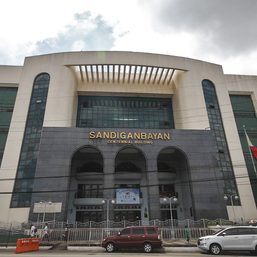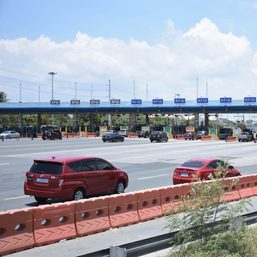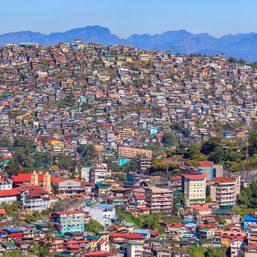SUMMARY
This is AI generated summarization, which may have errors. For context, always refer to the full article.

First of 2 parts
CAVITE, Philippines – Ernesto Jacobo, a 64-year-old tenant farmer, is giving up after tilling a two-hectare farmland in Imus, Cavite, south of Manila, for more than four decades.
The farm will give way to the Cavite-Laguna Expressway (CALAX), a 44.69-kilometer tollway that promises to make travel between the provinces of Cavite and Laguna easier.
While the payment terms are still unclear and the “price is not right,” giving way to the tollway project is inevitable, Jacobo told the Philippine Center for Investigative Journalism (PCIJ).
“Dadaanan na ito ng CALAX, pero ayaw pang pumayag ng may-ari dahil wala pang bayad,” he said. “Walang magagawa dahil gobyerno ’yun. Ang habol na lang namin ay mabayaran kami.”
(CALAX will pass through this two-hectare farmland, but the landowner has yet to allow it because there is still no payment. We can’t do anything because it’s a government project. What we are after is the compensation.)
The P35-billion CALAX project – which will “solve current traffic congestion” at major roads in Cavite, according to the Department of Public Works and Highways (DPWH) – has hastened the decline of agriculture in the city of Imus, where light industries and rapid urbanization have displaced rice farming.
An Environmental Impact Assessment report by the DPWH noted that the CALAX project would lead to “permanent loss of agricultural land” and displacement of families and establishments in the Cavite section, even as the same report recognized that the section contributed about 40% to the province’s rice production.
CALAX is a public-private partnership deal between the DPWH and MPCALA Holdings Inc., a unit of the Manuel Pangilinan-led Metro Pacific Investments Corp. The project was awarded to MPCALA in 2015 during the Aquino administration, and construction began two years later.
The CALAX Open Canal interchange, which will affect properties in Imus, is expected to be finished in 2023.
Once the project is completed, its Cavite section, which covers the cities of Imus, General Trias, and Dasmariñas, and the municipality of Kawit, will benefit from the “increase in employment opportunities, government revenues, and improved social services.”
The high-speed tollway is expected to accommodate 45,000 vehicles daily and cut travel time between Cavite and Laguna from more than two hours to less than an hour.
A DPWH-led survey in 2014, however, found that landowners expected “lower income from farm harvest after the project is completed.”
Jacobo said giving CALAX the right of way (ROW) it needed even for partial construction would destroy the irrigation system, which meant losing the whole farmland.
“Buwisit ’yun sa mga mamamayan dito dahil hindi kami makikinabang doon. Halimbawa, ikaw may sasakyan ka, makikinabang ka. Pero kaming mga magsasaka, wala kaming sasakyan, paano kami kikita roon?” Jacobo said. (We’re at a disadvantage because we will not benefit from it. For example, you have a car, you will benefit from it. But we farmers, we don’t have a car, how can we earn money from that?)

Under the project’s environmental management plan, construction work should occur only after the harvest, and stockpiles must be placed away from productive agricultural lands.
Tenant farmer Cesar Guevarra, 52, however, said this was not the case.
For instance, his cows can no longer openly graze because of the fences around the road construction.
Guevarra now plans to sell his cows, whose milk earned him P100,000 annually.
“Mapipinsala pa nga kami. Sa halip na mayroon kaming hanapbuhay, mawawala iyong aming hanapbuhay. Wala naman kaming pinag-aralan saka matanda na kami. Buwisit sa amin iyon,” he added.
(We’re on the losing end. Instead of having a job, we will lose our jobs. We didn’t have education, and we’re old. It’s an annoyance for all of us.)
Expropriation
The farmlands affected by the CALAX project were subjected to expropriation, in which the state acquires property for public use through the courts, said Provincial Agrarian Reform Program Officer II Alexander Costa.
In 2020, the Supreme Court designated 11 courts in Cavite, Caloocan, and Manila as special expropriation courts to hasten ROW acquisition for big-ticket infrastructure projects, including CALAX. The DPWH said it would file 902 expropriation cases.
Because CALAX is a national government project, provincial offices had “lesser jurisdiction” over it, Costa said.
Jacobo said the landlord told him the final offer was a mere P100 per square meter, or a total of P2.4 million for 24,000 square meters of land.
The amount is small considering that the sale proceeds will have to be divided among several individuals who own the property, leaving very little for tenants like Jacobo.
Jacobo claimed a contractor approached him and promised to pay the tenants P450,000 to get rid of them. There was no mention of payment for the landowner.
“Binabayaran nga kami nu’ng engineer na contractor. Walang malinaw kung magkano ang bayad. Babayaran daw kaming tenants, pero ’yung may-ari hindi babayaran,” he said. (We were being paid by the engineer who was a contractor. The amount was unclear. They would pay us tenants, but they would not pay the landowners.)
Jacobo said he and the other tenant-farmers declined the offer for fear of being sued by the landowners.
Nenita Ramos, who serves as secretary of the farmers’ group in Imus, suspects that landowners have already been paid or at least given advance notice by buyers.
Most tenant-farmers, however, simply did not want to leave their farmlands, resulting in project delays, she said.
“Naibenta na ’yan. Ayaw lang nilang tanggapin kasi siyempre kabuhayan nila ’yang mawawala,” Ramos said. (That’s been sold. The tenant farmers just don’t want to accept reality because, of course, they will lose their livelihood.)
“Maraming may-ari dito gusto nang ibenta, pero kumikita pa mga tenant kaya ayaw tanggapin ang bayad,” she added. (Many owners here want to sell their land, but the tenants are still making money so they don’t want to accept the payment.) – PCIJ/Rappler.com
Next: Urbanization, rampant land conversion kill farmers’ livelihoods
Republished with permission from the Philippine Center for Investigative Journalism.
Add a comment
How does this make you feel?














![[Be The Good] PAREX and the power of communities](https://www.rappler.com/tachyon/2024/03/parex-protest-newsletter-mar-21-2024.jpg?resize=257%2C257&crop=275px%2C0px%2C720px%2C720px)










There are no comments yet. Add your comment to start the conversation.